Showing 81–90 of 134 results

Professor Davane offers stimulating perspectives on varied themes covering classical Sanskrit literature, poetics, linguistics, history, mythology and legendary narratives including reinterpretations of the Vedic view of the moon, samudra, dreams, etc.
A distinguished scholar who has had a lifetime engagement with Sanskrit studies: ranging from the Vedic samhitas to contemporary literary criticism, Professor Davane here offers at once insightful, highly stimulating perspectives on diversely varied themes from classical Sanskrit literature, poetics, linguistics, dramaturgy, history, mythology and legendary narratives. And, these apart, brilliant reinterpretations of the Vedic views of the moon, samudra (ocean), dreams and deep sleep. Reviewing the gamut of kavya definitions and its scope, in terms of the literary genres it encompasses, the book critically examines, for the first time, Rajashekharas view of shabdaharana (verbal borrowings), kavisamayas (conventional poetic ideas) in Sahityashastra, and the progression of rasanishpatti in classical Sanskrit literature. It also seeks to gauge Mahamahopadhyaya Dr. P.V. Kanes contribution to Sanskrit poetics rather than his oft-appraised work on Dharmashastra. Dr. Davane marshals an astonishing mass of original literary sources to highlight the all-expansive influence of Kalidasas unparalleled Iyric: Meghaduta, on classical writings, the richness of Banabhattas utprekshas (poetic imagination), the emergence of Sarasvati as a pantheonic deity, and how Sita, the epitome of ideal womanhood, has been varyingly portrayed by over twenty Sanskrit playwrights. Also shown, in addition, are the legends/myths about Samudra-manthana, Amritamanthan, Rahu-Ketu, Udayana, and Dhanvantari, in their altogether fresh perspectives. This composition of Prof. Davanes writings is an essential reading for the scholars/researchers of Vedic and Classical Sanskrit literature.
The problem of explanatory gap in the phenomenal consciousness has risen in the Western philosophy mainly because the consciousness itself and its manifestations or reflections are treated separately. Whereas, according to the Vedanta school of India, the phenomenal consciousness is merely manifestations of self-consciousness which is embodied in the human beings. In this approach, the phenomenal consciousness and self-consciousness are one and the same thing because the former depends upon the latter. Hence, there is no explanatory gap in the phenomenal consciousness. Similar is the case with the mind–body problem which exists in the Western philosophy mainly because the mind is treated as synonymous with consciousness.
This book solves the above problems on the basis of the Indian philosophy and existential philosophy of Jean-Paul Sartre. In both the philosophies, there is no explanatory gap in the phenomenal consciousness and the mind–body problem.v

It is an attempt to describe and address violence as it manifests in public life. There is violence in all the three spheres of human functioning — thought, action, and passion. With person-based violence, there are group violence, identity conflicts, and violence against nature as well.
Phenomenology of Violence describes violence as it manifests in public life. There is very little written on violence that disturbs peace. Violence, per se, is more than physical abuse and it spreads across different realms. Aggression, casteism, child exploitation, coercion, drug abuse, ethnic and religious violence, gender discrimination, naxalism, sexual abuse, suicide, and terrorism are some of the manifestations of violence. Violence occurs in all the three spheres of human functioning — thought, action, and passion.
Violence is a part of mans nature and is grounded in his animal origins. Going by Mahatma Gandhi, man is a composite of brute and human elements. Violence is not merely person-based. In addition, we have group violence, identity conflicts, and excesses against nature as well. Violence is involved in all acts of hate and selfishness, whereas nonviolence is grounded in love and altruism.
This volume addresses varied aspects of violence: its causes, nature, and solutions. Luminaries such as Albert Schweitzer, Bertrand Russell, Mahatma Gandhi, Martin Luther King Jr, and Nelson Mandela were some of the prominent protagonists of peace, who denounced aggression, discrimination, violence and war.
At a time of religio-political violence across the globe along with other forms of violence, this volume gives out the message that until we bring about peace in our life, both internal and external, we cannot overcome violence and that the ultimate recourse to peace is nonviolence.
Vol. 1. ISBN: 9788124609095
Vol. 2. ISNB: 9788124609101
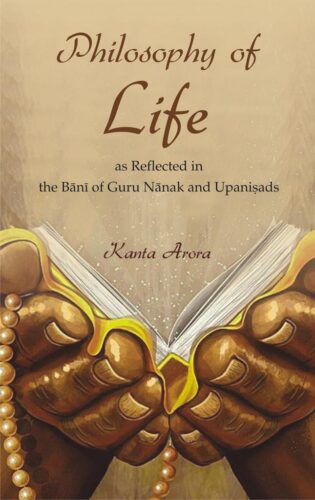
This volume illustrates, compares and discusses as to how Guru Nanak with his transcendental exposition, sharp skill, argumentative capability and common poetic language further enriched, explained, simplified, modernized and expressed various theological and philosophical concepts elucidated in Upanishads for the understanding and adaptation of a common man.
This volume illustrates, compares and discusses as to how Guru Nanak with his transcendental exposition, sharp skill, argumentative capability and common poetic language further enriched, explained, simplified, modernized and expressed various theological and philosophical concepts elucidated in Upanishads for the understanding and adaptation of a common man. Upanishads are breath of eternal and hymns of Guru Nanak are a divine song of life. Guru Nanaks exuberance of love and search for God and godly people was not confined to any religion or religious institution. He revolted against the ritualistic mind of a brahmana. He was essentially a man of God whose love and quest for search for the Ultimate Truth knew no limits. In the pursuit of this search he enjoyed a reach to the state of void meaning a state where there is no distinction between the object and the subject the knower and the known. He was a protagonist of Bhakti tradition and stressed more on bhakti or devotion to God. He taught the Sahaja-Patha or Surata Shabada Yoga that easily takes one straight to the Lord by spontaneous concentration of mind.
Both hymns of Guru Nanak and Upanishads explain that the real aim of human life is to attain liberation from the repeated coming and going in incarnations, which can be attained by adequate karma, knowledge and disciplined meditation.

Using case studies from pilgimages around the world undertaken by the devout, the volume explores the ways many of the pilgrimage traditions have started and evolved. The book deals with pilgrimages not only in India but also in several countries abroad.
Pilgrimage involves movement of people, either as individuals or as members of a group, in search of the sacred. Spontaneous behaviour, miraculous events, and/or ecstatic visions of individual pilgrims have often resulted in complexity in ritual, meaning, and movement. Pilgrimages may start with individual ecstatic visions, unusual strange unworldly experiences, which are the experiences of ordinary people, certainly not of priests or politicians. Often they are uniquely human experiences which embarrass ecclesiastical authorities.
As a pilgrimage tradition evolves, sacred sites may become formalized in organized socio-political systems with economic overtone. Even in these structured situations, individual people may still have powerful individual experiences. Eventually a pilgrimage tradition may be taken over by religious and political authorities, lose spontaneity, and become frozen in time. But even in these situations, in which large numbers of people may gather, there is a tremendous amount of primal energy in which innovations and visions may be evoked.
Using case studies from pilgrimages around the world, the volume explores the ways many of these traditions have started and evolved. A common perspective is that of self-organization of complex structures in space and time.
The variety of pilgrimage described in the book is remarkable. The subcontinent of India is the location of many sites such as the temples to the nine planets in Tamil Nadu, the pilgrimage circuits of Varanasi, early Buddhist pilgrimages in Sanchi and Bodh-Gaya, the great ruined city of Vijayanagara, those associated with the Ramayana, and the death ceremonies at Gaya. Beyond India, the self-organization and stability of pilgrimage systems are analysed for pilgrimages in Nepal (Kathmandu), Japan, Mexico, the Caribbean, Peru, Norway, and the US.
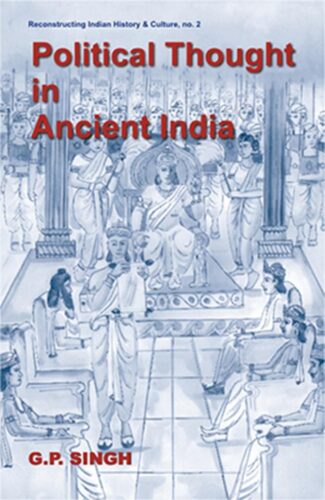
Professor G.P. Singh tries to crystallize the political thought-processes accompanying the evolution of state in the bygone centuries. He dwells on the time-honoured components of the Saptanga theory and their role in supporting the state.
Ancient Indians were a highly organized polity, with a well-established worldview of the Rajya (the State). And also of its seven distinct organs: svamin (the king), amatyas (the ministers), janapada/rashtra (the territory and the people), durgas/pura (the forts/capital), kosha (the treasury), danda/bala (the army), and mitra tatha niti (the allies and inter-state relations). In their togetherness, these components of the state led political ideologues to advance the Theory of Saptanga : the seven limbs each of which admitted varying emphases with ancient scholars, according to the changing political situations or their own predilections. Besides traditional/semi-historical writings, the Saptanga Theory of State finds recurring allusions in Kautilyas Arthashastra which, written sometime about the fourth century BC, remains the oldest surviving treatise of its kind on statecraft. Surprisingly, the Arthashastra itself, claims its author, is a compendium of the writings of as many as eighteen ancient teachers, like Manu, Brihaspati, Ushana, Bharadvaja, Vishalaksha, Prachetas, and Pishuna. With bit-by-bit analysis of an astonishing mass of original, indigenous sources: Vedic, puranic, epical, Buddhist, Jaina, and even non-Indian, Professor G.P. Singh tries to crystallize the political thought processes accompanying the evolution of state through the bygone centuries. Bringing fresh insights into the Saptanga Theory, his study dwells, at length, on all its seven time-honoured components and their variegated roles in lending support to the state. Also underscored here is the relevance of ancient Indian view to modern theories of politics and diplomacy. A thoroughly documented work of equal utility to scholars and students, the monograph is supplemented by a comprehensive index and a glossary of non-English words/ phrases used in the text.
The book investigates some of the most discoursed conducts centring around the characters in the Mahabharata, concluding that these characters reinstate ‘purusartha’ (four basic aspects of human existence) and its relevance in shaping constructive social–political standards and assuring intellectual, emotional and spiritual evolution for individuals from all walks of life. Through rationalized arguments, the book debunks age-old attitudes/perceptions that have kept these characters from being understood from beyond. This way, the book shifts its focus from studying the epic solely for its sacredness to seeking its relevance in the modern way of life and ways in which it can offer guidance through present-day challenges and struggles.
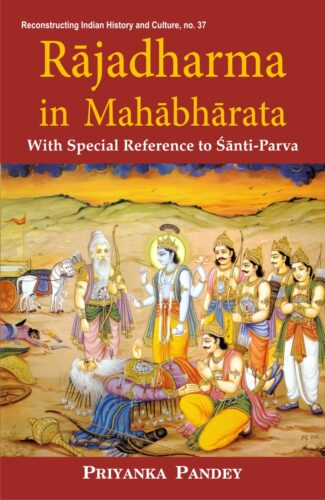
This book deals with all aspects of politics based on Mahabharata and addresses topics such as dandaniti, origin of state, the seven elements of state, functions of state, types of state, kinship, judiciary and administration in detail, among many other issues of political importance.
The idea of politics hardly finds an expression elsewhere as clearly as in Mahabharata. This work thus investigates the political thought explicit in Shanti-Parva and emphasizes that Mahabharata is a text in the study of politics, apart from the perception of it being a great epic and a text of high literary value. Whatever be the notion of politics we contemplate upon, it finds an articulation in Mahabharata. As the Greek tradition of thinking is the base of Western politics, Shanti-Parva of Mahabharata represents the Indian notion of political thinking, though there remain many similarities and dissimilarities between the two systems.
This volume navigates one to how to read Mahabharata as a political text; the idea of political thoughts, the constituting principles of politics and the political institutions in Shanti-Parva; and the relevance of these political thoughts in modern time. Topics such as dandaniti, origin of state, the seven elements of state, functions of state, types of state, kinship, judiciary and administration are discussed in detail, among many other issues of political importance.
The book collects, analyses and examines the internal evidences from Shanti-Parva and also from other parvans of Mahabharata to reach a decisive conclusion, making the work a composite result of textual analysis, related literature and subjective contemplation. It clearly shows that the idea of politics is not separated from the idea of ethics. Rather they are intertwined.
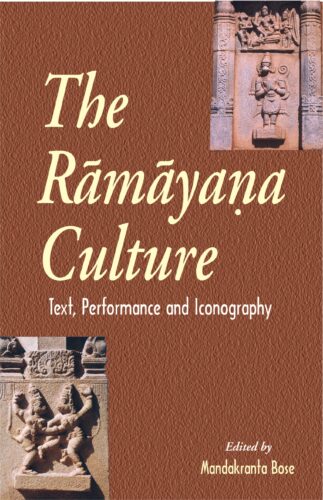
The essays in this volume approach the Ramayana from different perspectives textual criticism, art and architecture, and film to understand its ideological and aesthetic meanings. They address critical issues like the seminal status of Valmiki, gender representation in Ramayana and the importance of the so-called Ramayana derivatives.
These essays, originally presented at an international conference, are in the forefront of the modern response to an ancient work that has gained a new critical and social relevance in contemporary scholarship. Approaching the Ramayana from several angles in an attempt to understand its aesthetic and ideological meaning, they examine the epic through the perspectives of textual criticism, art, architecture and film. Thereby they address critical issues such as the seminal status of Valmiki, the underlying problem of canonicity itself, the importance of other — so-called derivative — Ramayanas, the implications of gender representation, and the cultural manipulation of social ideals relating to the position of women and the idealisation of love that achieves its highest value in marriage. Using the methods of rigorous textual and historical investigation, each essay seeks not only to uncover the layers of meaning in the complex structure of the epic in its varied forms but also to situate it critically in the cultures of South and Southeast Asia.
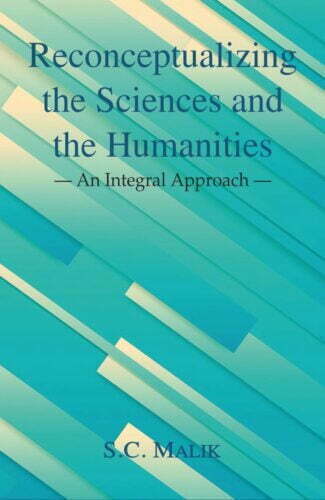
This book looks at recent developments in the sciences and the humanities taking into account many disciplines. The integral approach suggests radical departures by presenting alternate paradigms to the consumeristic paradigm which governs humankind today.
This book by an anthropologist looks at recent developments in the sciences and the humanities taking into account many disciplines. The integral approach suggests radical departures by presenting alternate paradigms to the consumeristic paradigm which governs humankind today. This reconceptualizing through a rethinking is the only way a shift in lifestyles can be brought about if we wish to avoid the disasters which are upon us in terms of the oftstated ecological, socio-economic, psychological and spiritual crises. The implications of science in the new age are crucial for the growth and relevance of those disciplines which study the human phenomenon. By and large, in these academic disciplines general concepts have neglected the role of Consciousness which is a must in any integral approach.
Each chapter is governed by this overall context, as it is exemplified in the different topics dealt with from the viewpoint of many disciplines. The argument is not a linear sequential one, and in this sense each chapter is self-contained especially because the basic premise is that it is both the observer and the observed which have to be thoroughly understood at the particular and the universal levels. Science itself is moving into metaphysics, converging well into mystical insights and ancient speculative thought. The various themes of the book are: Civilization Studies and Knowledge: A Holistic Approach; Rock Art: A Creative Act; Man in Nature: An Integral Universe; A Question of Consciousness; Science and Consciousness; Violence and Non-Violence: A Binary System; and Integral Listening as Communication.
| There are no products |